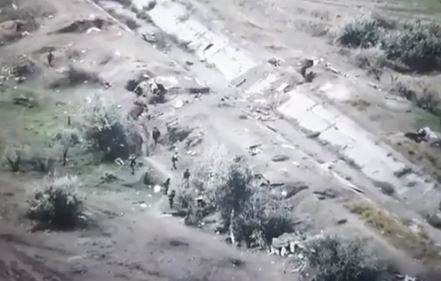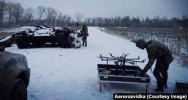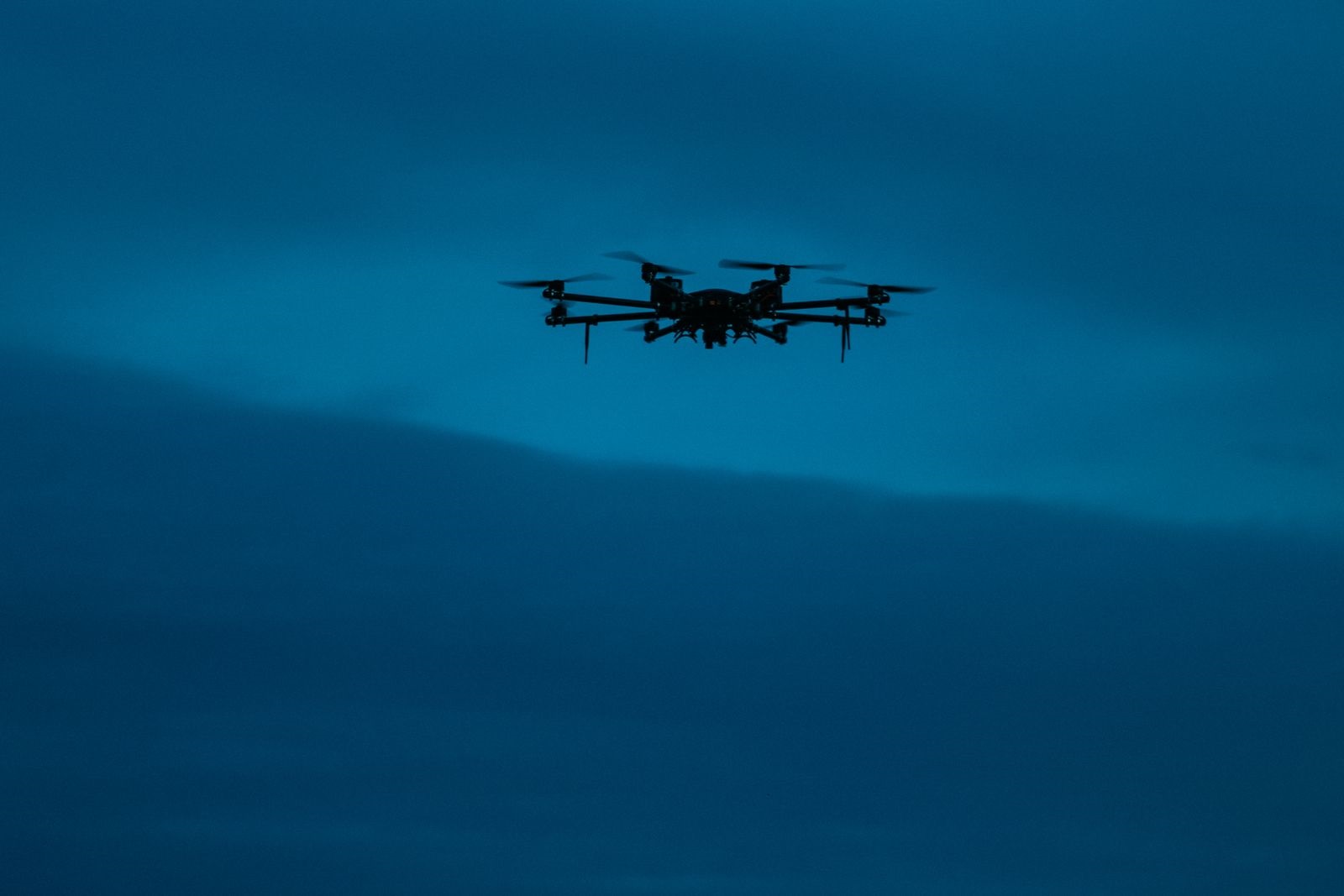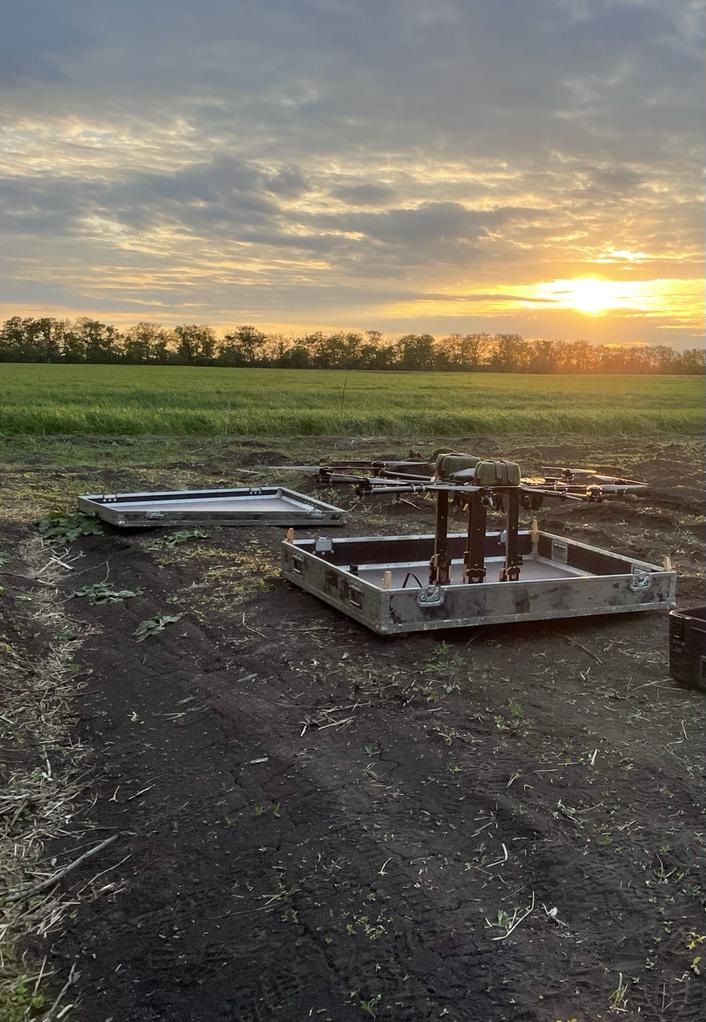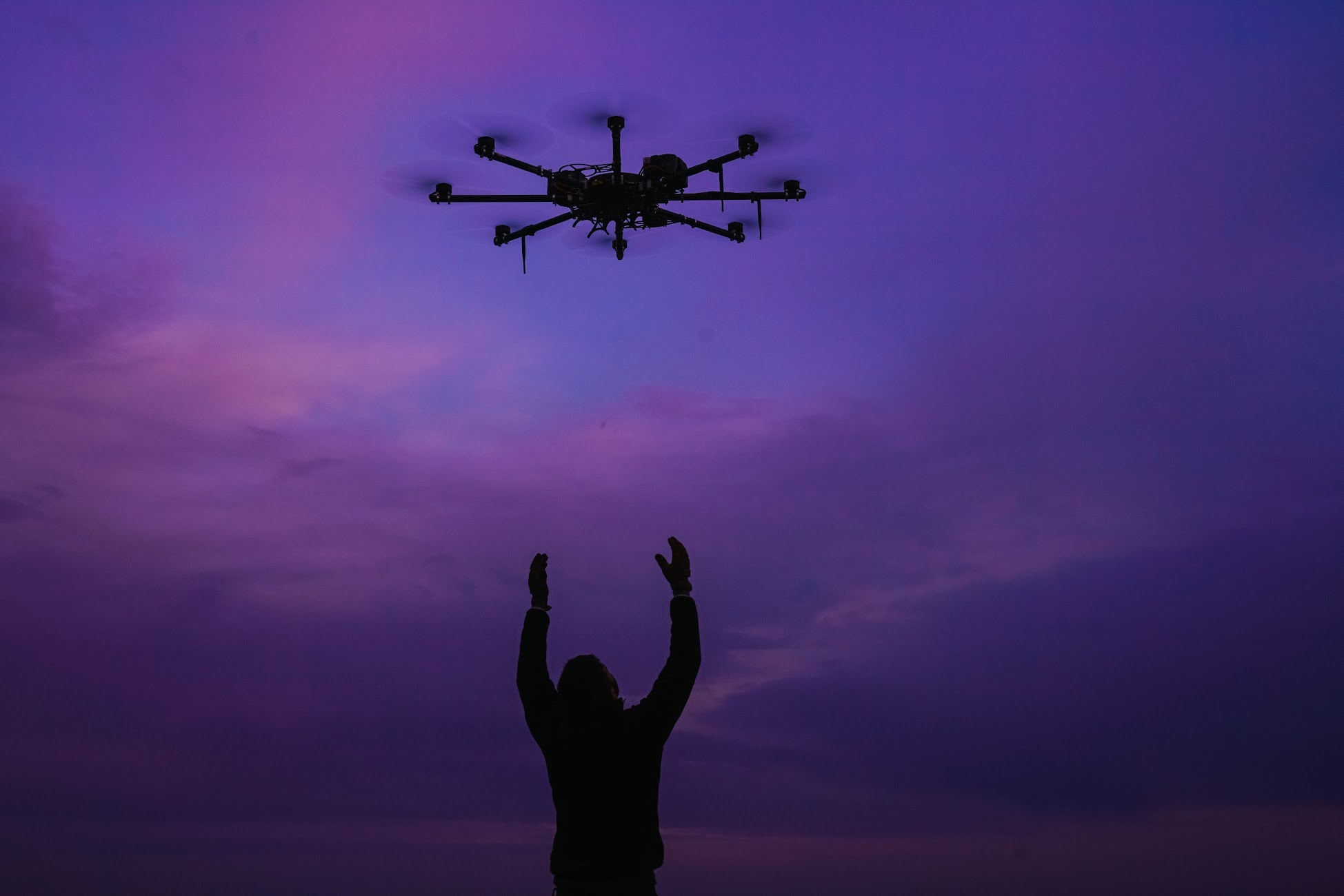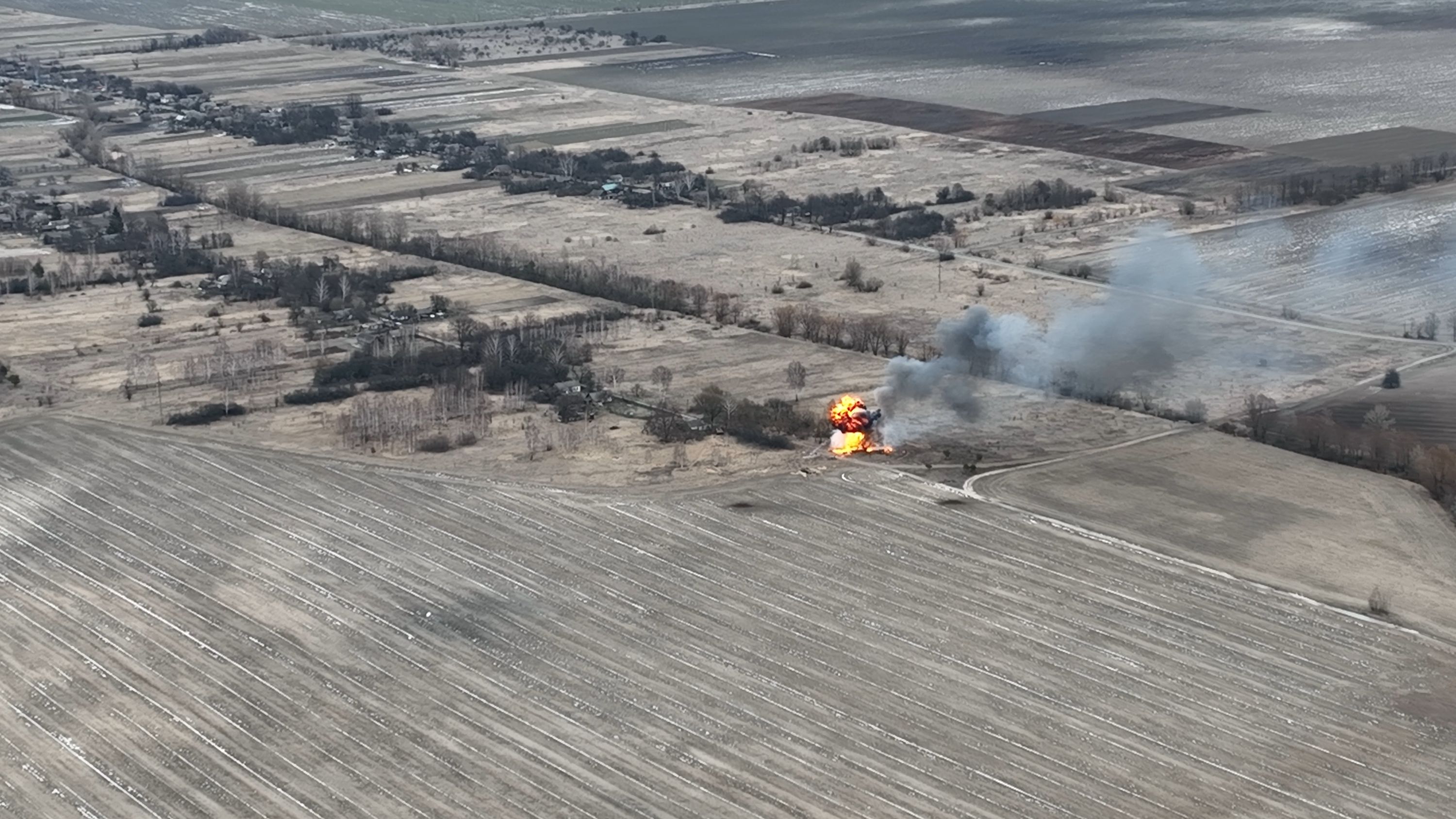The number one problem that arose in the defence of Hostomel was communication. Unfortunately, National Guard radios operate on high frequencies, we had Motorola, Harris, in general we had a mixed type of radios. The SOF used Harris's exclusively, while units 3018 and 3027 only used Motorola. There were very serious difficulties with communication for obvious reasons. And initially there were attempts of friendly fire, but fortunately because of the experience and professionalism of some units it was possible to avoid casualties among the cooperating units of the 200s and 300s. The second problem is the low supply of air defence equipment. ZU-23-2 had no ammo and had to be rearmed later, and the conscripts got ammo boxes from some stash, and anti-aircraft gunners urgently rearmed them – well, this is ridiculous. MANPADS were only available to 3018, that is, it took time to first find them, then they were brought into fighting position – well... it was hard enough, let's just say. Regarding defence: there's a lot of people claiming sole participation in the defence of Hostomel airport. There were many units involved in the defence of Antonov airport, and it's kind of hushed up.
-
I would further add to the disadvantages the lack of air defence equipment in sufficient quantities. In fact, there was a situation where, by some miracle, MANPADs were not in our vehicles when we left for Hostomel, because we were told that "guys, you shouldn't take them, everything is there" - this was the first task 200 I received during this war, that is, in the first hours I received task 200, a dumb task that could not be accomplished without these MANPADs. The third problem was that the enemy reached Hostomel airport very quickly with minimal casualties along the way. Yes, the AA autocannons were deployed: for example, at Mezhigir'ya there were several ZU-23-2 squads, MANPADS operators were deployed, and for some reason something went wrong, to put it mildly. I cannot say exactly what happened there because I was not personally present there and only rumours reached me as it all happened, but in fact the situation was such that the air defence did not manage to repel the airborne troops to the full extent, i.e. the enemy was not eliminated in volumes sufficient to terminate the operation. So we had what we had: the landing at Hostomel, the first hours of the battle (up to 12 pm) and then we got what we had. If there were ZU-23-2s, they would have torn those helicopters to pieces at such an altitude, most likely, if there was a satisfactory density of fire and a sufficient number of anti-aircraft guns. Unfortunately, the exact route was unknown, so there were probably no AAs there. MANPADs were used in Hostomel – to a limited extent, but they were used. In fact, MANPADs proved quite effective against helicopters, including the attack helicopters Ka-52. It is a good enough thing for countering low-flying, medium-speed targets, and one of the main lessons of this war is that MANPADs have to be necessarily present in the companies, whatever company they may be.
-
Why do you think there were not enough air defence weapons in the potentially endangered areas? What prevented these locations from being reinforced?
— The problem is that the senior leadership did not really seriously consider the possibility of carrying out a real air assault on critical infrastructure such as military and civilian airfields, well, or a dual purpose. Accordingly, with this turned out such a fucking funny situation, I would say that the enemy knew that we were skeptical about such options and hit exactly where we expected, but not so seriously. But in addition the units of m/hr 3027 were responsible for the airfields, and there the staffing was mainly composed of conscripts, the number of contract servicemen was minimal. The enemy knew about the real state of things in the units which were responsible for protecting the airfield. They knew that 4th RRB was on rotation and was well aware of the conditions that had developed by the 24th February. Additionally, I believe that a very big blunder by the HQ was that the enemy was underestimated.
-
Our major mistakes in some sense overlap with the Russians, i.e. we have underestimated them, we have made very big mistakes in timing, because we were expecting the enemy on February 23rd, nothing happened on the 23rd and accordingly what? Everybody relaxed. And on the 24th everything fucked up. That's how unpleasant the situation was. The organisation of communication also left much to be desired, in the first days cooperation was organised badly, because there were very frequent cases of friendly fire, getting hit by their own and enemy artillery shells, general confusion and, so to say, slow transfer of intelligence, orders, combat orders from the HQ or from the higher headquarters to the bottom, because there were situations where the lack of communication and so on (Starlink terminals were not available yet in sufficient quantity) operational transfer of information was complicated. Another such significant problem was that some units were de jure combat-ready but de facto there was nothing – this was more about the National Guard.
-
How would you assess the performance of the self-propelled SAMs as well as the S-300 SAMs? At what point did air defence systems like the "Osa" and "Buk" start operating on the line of battle?
— Had it not been for the Buk, S-300 SAMs of various modifications, which were in the Vyshgorod anti-aircraft missile division, it would have been very, very bad, as the enemy would have had complete air superiority and they would have done whatever they wanted. Thanks to the fact that the S-300 SAM units were spread out beforehand, at first the enemy aviation could not achieve air superiority and provide support to the landing force that ended up in Hostomel. Their combination of Special Forces+aircraft did not work. "Osa" started to operate around the 25th when enemy aviation was operating on the Irpin-Guta-Mezhigorskoye line. At that time the Osa-AKM SAM system, as far as I know, shot down one Mi-8AMTSh. "Buk"s entered Kyiv somewhere on 27-28th, i.e. the enemy aviation action was almost nullified thanks to the fact that "Buk"/"Osa" appeared. So I want to say that the anti-aircraft missile systems, even though they were Soviet-made, played a pretty serious role in repelling air strikes and destroying cruise missiles and other types of weaponry.
-
How did the Russians manage to get to the outskirts of Kyiv so quickly? What do you attribute it to?
— It is simple: they did not stop during the movement, they did not unfold the front line and did not prepare for prolonged battles. And we were bringing their communications and logistics to a collapse, so that we could use the advantage of firepower. There was no other way.
-
What do you think about the use of ATGMs in February and March – both domestic- and foreign-made?
— The number and frequency of the use of ATGMs, I think, in this and subsequent periods is staggering. In every infantry unit it was mandatory to have at least a couple of anti-tank missile systems in some variation. We received the Javelin and NLAW anti-tank missiles on the evening of 26th. They were simply unloaded from the transport vehicle and told to use them to their full potential. They were used. The vast majority of the enemy's armored vehicle losses were the result of artillery and ATGM fire.
-
How would you assess the level of assistance of the local population to the military?
— The level of interaction between the local population and the military was quite high. Indeed, if there was need in any equipment or someone needed a ride – locals provided it without too many questions. I appreciate it very much, it helped a lot and those people who remained in the occupied territories were providing information on the location of enemy's headquarters, high-tech equipment (electronic warfare, signals intelligence) and counter-battery radars which were of interest to certain structures. Back then, if you remember, both the SSU and the MDI (Main Directorate of Intelligence of the Ministry of Defence of Ukraine) often published photos and technical descriptions of the vehicles they were interested in. It happened quite often and then these objects were pointed specifically – where they were located, where they were deployed and in 99.9% of cases this turned out to be true. The percentage of so-called false information was minimal.
-
What were the tactics of using tanks in the conditions of the Kyiv Region geography?
— Tanks were used more as "assault guns". There were no tank duels as such in the Kyiv region, although the only instance when I personally observed a tank vs tank combat was in Gorenka, when a tank platoon of the 72nd brigade entered the village, and engaged two shoot-and-scooting T-72B3s from the enemy's side. The duel ended with our tankers hitting the seventy-two with synchronous fire from two firing positions on the opposite bank of the river – he, it turns out, was firing from the side of the glass factory, where they had a firing position. It was hit, there was no epic explosion with the turret blown off, but by the looks of it, the crew was either badly shell-shocked or some of the fire control system elements were damaged – in general, the tank was abandoned and it stood there until it was towed away the next morning. In general – tanks were used as assault guns, as infantry support, but they were not used as breakthrough vehicles. Basically, either BMPs or BMDs – both from our side and from the enemy's side – were mostly encountered. In the direction of Gorenka-Romanovka-Moshchun, our units mainly used wheeled APCs like those BTR-3Es (I have not seen BTR-4s, but as far as I know, they were there too). Vehicles were used in a very limited and very careful manner.
-
What about the performance of regular Ukrainian and Russian artillery units? How would you assess their effectiveness?
— I have been in the middle of artillery duels: our crews of self-propelled artillery divisions, towed howitzers (if we are talking about 2A36 "Hyacinth-B"), mortar batteries have shown incredible efficiency and effectiveness. I can tell you from the example of a mortar battery in one of the military units of the National Guard: the guys very quickly learned how to fight, because before that it was mainly firing exercises and, let's say, they had minimal time to deploy – they arrived, fired, left. All this, together with a solid salvo against enemy positions took up to 15 minutes and the return fire came in about 20-25 minutes and then, quite askew – there was a large dispersion and even if the mortar men were on the spot, they would hardly be hit. Again, the mortar batteries from the other side were most likely "Vasilki" (82-mm gun-mortar) or regimental 120mm mortars, there was a wide scattering there. As for the work of large artillery (122, 152), they were firing quite densely, sometimes pretty accurately, but they could not get into a counter-battery fight with our units, because ours were faster, more accurate and, accordingly, the Russians tried to leave the position as quickly as possible, so there is no need to talk about the counter-battery. Although it was present at first. Roughly speaking, two weeks since we were stationed in Gorenka – they regularly played this biathlon there and fortunately our units in most cases won the artillery duel. So I think the effectiveness was extremely high.
-
Is there an example of illogical actions?
— Stretching communications; send logistical convoys without escort, trucks only: convoys go in marching order, where our SRGs might operate, go without advance guard, without side patrols, i.e. the organization of movement of convoys was about zero. The leading patrol, the so-called forward outpost (which is found in battalion and bigger units), patrols (company and smaller) were very seldom met – all of this was very rarely encountered. In other words, the enemy messed up very basic elements of warfare. I do not know how their officers were trained and in what training institutions, but let's just say they would not have passed the exam.
-
Were the remaining fortifications from the times of the Second World War, and in particular those of Kyiv Fortified Region used?
— Yes, the pillboxes were used as proper pillboxes with different types of armament and as command posts. Some of them were already in a bad condition, but the majority of them were still usable. They were actively used and it played to our advantage that we had such fortifications on our side.





